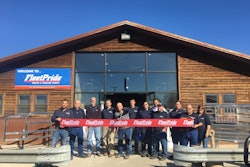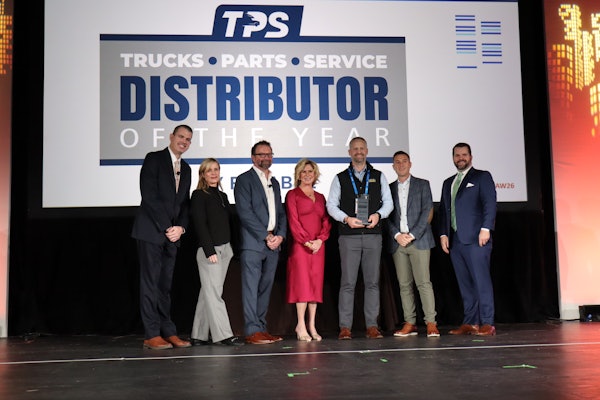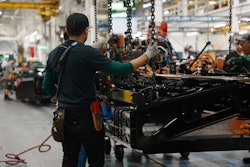Getting invention right is hard. Getting commercial innovation right is tough. Doing both together is practically impossible.
By Bill Wade, Wade & Partners
As you may know, I have written several articles (with the assistance and research of Bruce Merrifield) about the transitional effects of Amazon on distribution. The more I learn, the less probable it seems that anyone knows the true ‘future state.’
Numerous experts have described the current retail disruption as the “canary in the coal mine,” forewarning of greater distribution channel disruptions ahead. The chaotic disruption in the retail sector and massive store closings and logistics realignments represent the dangers of rapid ‘decompression’, potentially leading to a recession in the broader economy.
Contrary to the common belief that Amazon and e-commerce alone are causing this retail apocalypse, the shift to online cannot possibly offset the losses in the brick-and-mortar world.
The base of the only food pyramid in the U.S. economy, consumers, directly controls two thirds of GDP. Boomers are downscaling and not spending on stuff, and the emerging core of millennial consumers are spending more on travel, leisure, entertainment and experiences. This in turn builds whole new industries for swapping, sharing and renting versus owning. Where personal transport and ultra-focused last mile logistics fits is anyone’s guess at this point. I can’t get any two experts to agree.
Technology Is Feral
Whether trying to manage product innovation or new schemes and channels of distribution, it takes teamwork to wrangle new tech solutions, and patience to master it. Even in the best of circumstances, it runs away. That’s why getting invention right is hard, and getting commercial innovation right is hard, and doing both together is practically impossible.
A recent PBS interview by Derek Thompson took a hard look at Google’s take on this problem. The effort’s name, X, was chosen as a purposeful placeholder—as in, “We’ll solve for that later.” The one clear directive was what X would not do. While almost every corporate research lab tries to improve the core product of the mother ship, X was conceived as a sort of anti–corporate research lab. Its job is to solve big challenges anywhere except in Google’s core business.
X is perhaps the only company on the planet where regular investigation into the absurd is encouraged and even required.
The purpose of X is not to solve Google’s problems. Thousands of people are already doing that. Nor is its mission philanthropic. Instead X exists, ultimately, to create world-changing companies that could eventually become the next Google.
Google realizes the need for control and coordination. They assembled a team of diverse experts, a kind of Justice League of nerds, to process hundreds of proposals quickly and promote only those with the right balance of audacity and achievability, the Rapid Evaluation team.
In the landscape of ideas, Rapid Eval members aren’t vertical drillers but rather oil scouts, skillful in surveying the terrain for signs of pay dirt. Rapid Eval’s job is to apply a kind of future-perfect analysis to every potential project: If this idea succeeds, what will have been the challenges? If it fails, what will have been the reasons? A first and second derivative of this overall effort.
Do the Hardest Thing First.
Most people don’t want to do the hardest thing first. Most people want to go to work and get high fives and backslaps. Despite the conference-keynote pabulum about failure (“Fail fast! Fail often!”), the truth is that, financially and psychologically, failure sucks. In most companies, projects that don’t work out are stigmatized and their staffs are fired.
The worst scenario for X is for many doomed projects to languish for years in purgatory, sucking up staff and resources. It is cheaper to reward employees who can say, “We tried our best, and this just didn’t work out.”
Any successful organization working on highly risky projects has five essential features, according to Teresa Amabile, a professor at Harvard Business School.
- Failure value: A recognition that mistakes are opportunities to learn.
- Psychological safety: The concept critical to valued, non-traditional employees
- Multiple diversities: Of backgrounds, perspectives and cognitive styles.
- Focus on refining questions: Not just on answers; on routinely stepping back to ask whether the problems the organization is trying to solve are the most important ones. This must be consciously built into the culture, perhaps the most complicated task.
- The only one that you do not control: Financial and operational autonomy from corporate headquarters. That leads to an inevitable question: How long will support last if your X fails to build the next big thing?
Technology Is a Tall Tree
Planting the seeds of invention and harvesting the fruit of commercial innovation are entirely distinct skills, often mastered by different organizations and separated by years.
Don’t think of this type of organization as a planter or a harvester. Think of it as building taller ladders. They reach where others cannot. Nobody knows for sure what, if anything, ‘futurist’ teams are going to find up on those ladders.
But they’re reaching, creating, thinking, changing … and succeeding.
Bill Wade is a partner at Wade & Partners and a heavy-duty aftermarket veteran. He is the author of Aftermarket Innovations. He can be reached at [email protected].









